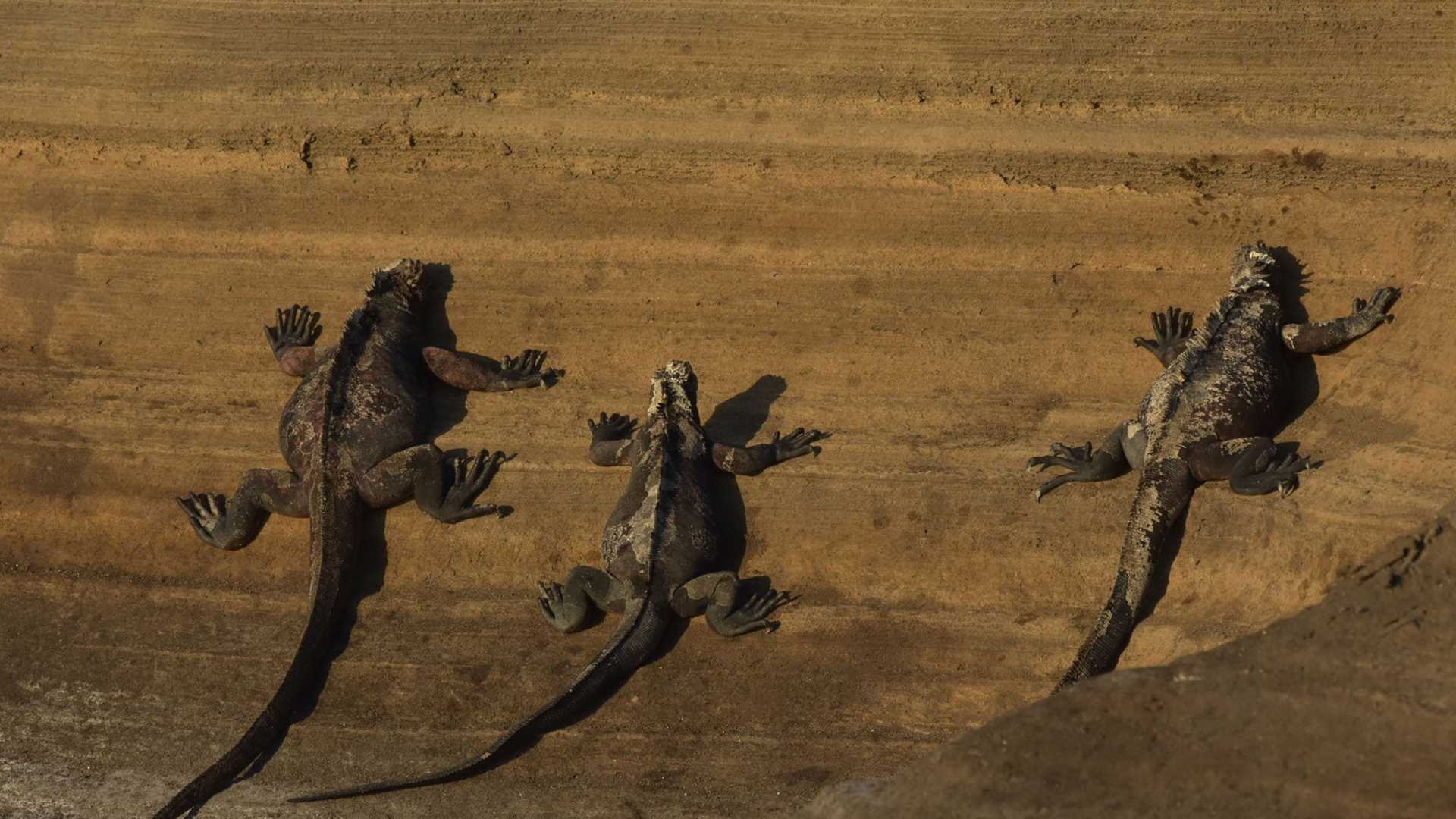Santiago, or James in English, is our chosen island. Lindblad Expeditions chose to “adopt” this island when we first started visiting the Galapagos on a full-time basis back in the late 1990’s. Santiago is large – but not the largest by far. Santiago is tall, but not the tallest by far.
Santiago has its own species of giant tortoise that has evolved, isolated here, wandering for the most part in the green highlands. Santiago also has fresh water – not much, but a few springs here and there. All this attracted the first visitors; food and water to be had, and resulted in the escape of black rats, the release of goats and pigs, and the these introduced mammals made a tremendous on the ecosystem that forever changed the landscape.
But the island was always thought to be within the realm of restoration. So once our ships began operations here, our guests and the company raised the funds to support any and all conservation/restoration projects on the island. Now we can say there are no more goats or pigs, but rats have yet to be eradicated (but definitely possible).
Today in the morning we visited Espumilla beach; dark brown sand and a favorite nesting site for green sea turtles when the weather starts to warm in November and December. Some folks went for a pre-breakfast hike into the forest, others stayed on the beach. However all had the outstanding experience of being in the presence – close presence – of the top predator here in the archipelago: the Galapagos hawk.
During breakfast we moved north a couple miles to Buccaneer Bay where the ocean was the focus of our endeavors. Kayaking and rides on the glass bottom boat were successful; snorkeling was not because of the deep swell coming in. But as the Zodiacs tootled around, a small hammerhead shark put in an appearance enough for many to see its small size – a youngster!
The afternoon had us exploring south, in James Bay. An early afternoon visit to the beach gave people the much-desired opportunity to spend yet more time in the presence of Galapagos sea lions. Even after all my years here in the islands, I still can’t get enough of these wonderfully entertaining mammals, so I can fully understand the fascination for people seeing them for their first time in Galapagos.
The trail determined by the National Park leads along an irregular coastline on the outer side of James Bay. Fissures, cracks and bluffs break apart the waves coming ashore in blasts and splashes. The Galapagos fur seal lives in small colony at the far end, and the high tide had them up high and easily visible, not an easy thing under normal circumstances. Their thick coat of hair keeps them hiding from the sun most of the time, so today was a great combination of breezy wind, high tide and bright sunlight.
Shorebirds by the score were to be seen as well: American oystercatchers, whimbrels, tattlers, turnstones, sandpipers. Blue-footed boobies were diving and frigates were overhead…so much to see, yet the light disappears so quickly here on the equator!
Evening had us out on deck for dinner – barbecue for all under a clear sky!









